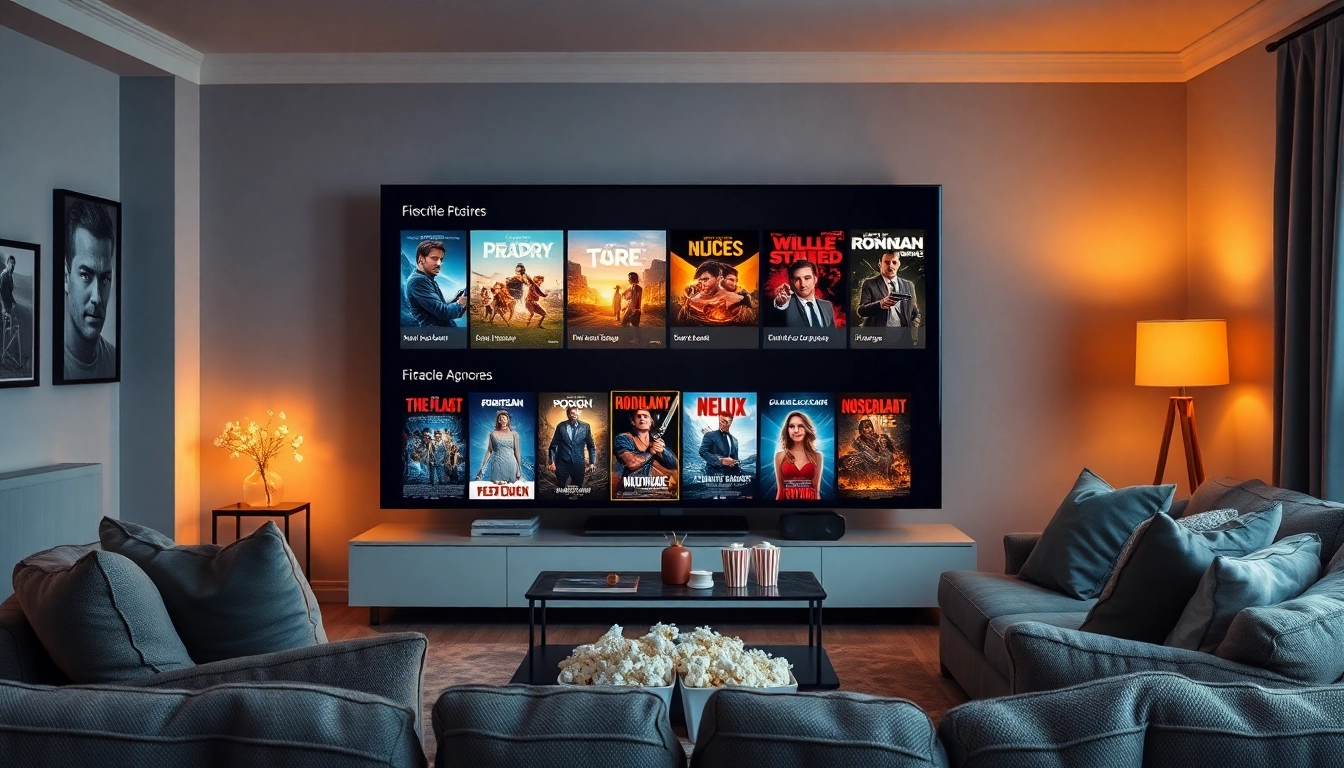Understanding Your Live Stream Audience
Live streaming has emerged as an influential medium for content creators, brands, and businesses to connect with audiences in real-time. Understanding your live stream audience is the cornerstone of successfully engaging them and maximizing your reach. Not only does it inform content creation, but it also serves as a guide for the techniques you employ during your streams. In this article, we will provide insights on how to analyze your Live Stream Audience, implement best practices, utilize the latest tools and technologies, explore case studies, and ultimately measure your success.
Demographics and Preferences
The first step in understanding your audience involves analyzing their demographics and preferences. Demographics include age, gender, location, and occupation, while preferences cover their interests, viewing habits, and platform choices. Understanding these aspects can help tailor your content to resonate well with your audience.
For instance, if your target audience comprises predominantly younger viewers, you might consider using more dynamic visuals and interactive content. Alternatively, if you are targeting older audiences, your live streams may need to feature more informative and straightforward presentations. Additionally, employing surveys and polls during streams can also provide direct feedback, further enriching your understanding of their preferences.
Engagement Patterns During Streams
Another critical factor in understanding your live stream audience is analyzing their engagement patterns. What keeps them glued to your content? Observing peak viewing times, average watch durations, and engagement metrics such as likes, shares, and comments can reveal much about your audience’s behavior.
For example, consider analyzing your stream’s chat to identify what topics generate the most discussion. Tools like Streamlabs and OBS provide analytics features that track viewer engagement in real-time, allowing you to adjust your content on the fly. This adaptability can not only improve viewer retention but also encourage active participation through chat, polling, or Q&A segments.
Common Challenges in Audience Retention
Despite efforts to engage your audience, retaining their attention can sometimes be challenging. Some common issues might include overly lengthy streams, unengaging content, or technical difficulties. To combat these challenges, it’s essential to continuously refine your approach based on analytic data and viewer feedback.
For instance, if viewership drops significantly after the first 15 minutes, it might indicate that the content isn’t capturing interest or that the pacing is too slow. Regularly reviewing recorded streams alongside viewer drop-off points can help identify the precise moments when engagement wanes, enabling you to strategize areas for improvement in future live streams.
Best Practices for Live Streaming
Strategies to Attract Your Ideal Live Stream Audience
Building a substantial audience for your live streams involves strategic planning and execution. Here are several best practices to attract your ideal viewers:
- Define Your Niche: Tailor your content to a specific niche that aligns with your expertise and audience interest. Specialized content can foster a loyal viewer base.
- Promote in Advance: Use all available channels—social media, newsletters, blogs, and websites—to create buzz around your upcoming stream, ensuring maximum attendance.
- Create a Schedule: Consistency is key in building an audience. Schedule your live streams at regular intervals so your audience knows when to tune in.
- Leverage Collaborations: Partnering with other creators can expose you to their audience base, effectively widening your reach.
Interactive Content Ideas for Increased Engagement
Interactive content can significantly enhance viewer involvement during live streams. Consider incorporating the following ideas:
- Live Polls and Surveys: Tools like Slido or Mentimeter can engage viewers and provide real-time insights on their preferences.
- Q&A Sessions: Devote time for answering audience questions in real-time, creating a community feel and sparking deeper conversations.
- Challenges and Giveaways: Hosting contests or giveaways can incentivize audience participation, promoting higher engagement levels throughout your stream.
Utilizing Analytics to Improve Live Stream Performance
Analytics play a crucial role in improving your live stream performance. Utilize both platform-specific analytics (like YouTube or Twitch) and third-party software to track important metrics:
- Viewer Count: Monitor your viewer count in real-time to determine peak engagement periods.
- Engagement Rate: Examine likes, shares, comments, and chat activity to gauge viewer interaction.
- Demographics and Behavior: Understanding where your viewers are coming from helps tailor content accordingly.
Periodic reviews of this data will allow you to understand trends and adjust your strategies, thereby enhancing engagement and viewer satisfaction.
Tools and Technologies for Effective Live Streaming
Essential Equipment for Professional Streams
Investing in high-quality equipment can significantly enhance the presentation of your live stream. Here’s a rundown of essential tools:
- Camera: A good camera enhances video quality. Consider a DSLR or mirrorless camera for a professional look.
- Microphone: Audio quality is paramount; invest in a quality microphone to ensure clear sound.
- Lighting: Proper lighting can dramatically improve your video quality. Softbox lights or ring lights are excellent options.
- Streaming Software: Tools like OBS Studio or vMix allow for greater control over your stream, including graphic overlays and scene transitions.
Software Solutions for Enhanced Audience Interaction
In addition to hardware, various software solutions can elevate the engagement level of your live streams:
- Streamlabs: Integrates with multiple platforms and allows for customizable alerts and donations.
- Ecamm Live: Ideal for Mac users, Ecamm offers a user-friendly interface with numerous features aimed at enhancing viewer interaction.
- Zoom or Discord: Both platforms can facilitate interactive discussions or lessons outside your primary streaming platform.
Integrating Social Media to Expand Your Live Stream Audience
Social media isn’t just a marketing tool; it’s also an important aspect of your live streaming strategy. Here’s how to integrate social media effectively:
- Cross-Promote Your Streams: Share snippets or teasers from your streams on platforms like Instagram, Twitter, or Facebook to generate excitement.
- Engage with Comments: Encourage viewers to comment on your posts and engage in conversations surrounding your upcoming streams.
- Utilize Stories and Posts: Use stories on Instagram or Facebook to remind followers of your upcoming live stream sessions in real-time.
Case Studies: Successful Live Stream Engagements
Brands That Thrived with Live Streaming
Certain brands have leveraged live streaming effectively to engage their audiences. For example, Red Bull regularly hosts extreme sports events that are broadcasted live, creating thrilling viewer experiences that align with their brand ethos. The audience feels connected to the action, making it a perfect marketing strategy.
Another case is Makeup brands like Sephora that conduct live tutorials for their products. These streams serve not just as promotional platforms but as genuine educational sessions that engage viewers directly.
Key Takeaways from High-Profile Streamers
Learnings from high-profile streamers can be instrumental in shaping your live streaming strategies. Popular personalities often emphasize the importance of authenticity and connection. Being relatable fosters loyalty, and their willingness to share personal experiences often enhances viewer trust.
Furthermore, consistent content quality, along with creative and interactive elements, is paramount. Successful streamers regularly utilize audience feedback to refine their approach continually.
Lessons Learned from Engagement Failures
Every successful live streamer has faced their share of challenges. High-profile brands and individuals sometimes launch streams that unexpectedly underperform. Common pitfalls include lack of preparation, ignoring viewer feedback, or offering dull content. Notably, the failure of a brand to engage effectively during a significant product launch can significantly impact perception. Taking these lessons into account can help you anticipate challenges before they arise and avoid similar traps.
Measuring Success With Your Live Stream Audience
Critical Metrics to Track During Streams
Understanding what metrics to track can help you gauge the success of your live streams. Some critical metrics include:
- Average Watch Time: The longer viewers stay, the more content you can provide during your stream.
- Peak Concurrent Viewers: Knowing the maximum number of viewers during your stream can indicate the success of your timing and content delivery.
- Engagement Rates: Monitoring comments and reactions provides insights into audience satisfaction and content effectiveness.
Long-term Engagement Strategies Following Live Events
Post-stream engagement is crucial for building ongoing relationships with your audience. Follow-up strategies can include:
- Replay Availability: Ensure that high-quality replays of your streams are accessible for those who couldn’t attend live.
- Post-Stream Surveys: Gathering feedback through polls or surveys can provide valuable insights for future content improvements.
- Mailing List Updates: Keep your audience informed and connected by sending updates about future streams and exclusive content.
Refining Your Approach Based on Audience Feedback
Finally, take the time to assess audience feedback critically. Constructive criticism is invaluable for any content creator, and adapting your content based on this feedback can foster trust and loyalty from your audience. For instance, if feedback consistently points to a lack of interactivity, consider increasing elements that promote viewer input and feedback during streams.
Moreover, integrating audience suggestions leads to greater satisfaction and can inspire your content strategy, reinforcing the relationship between you and your viewers.















Leave a Reply